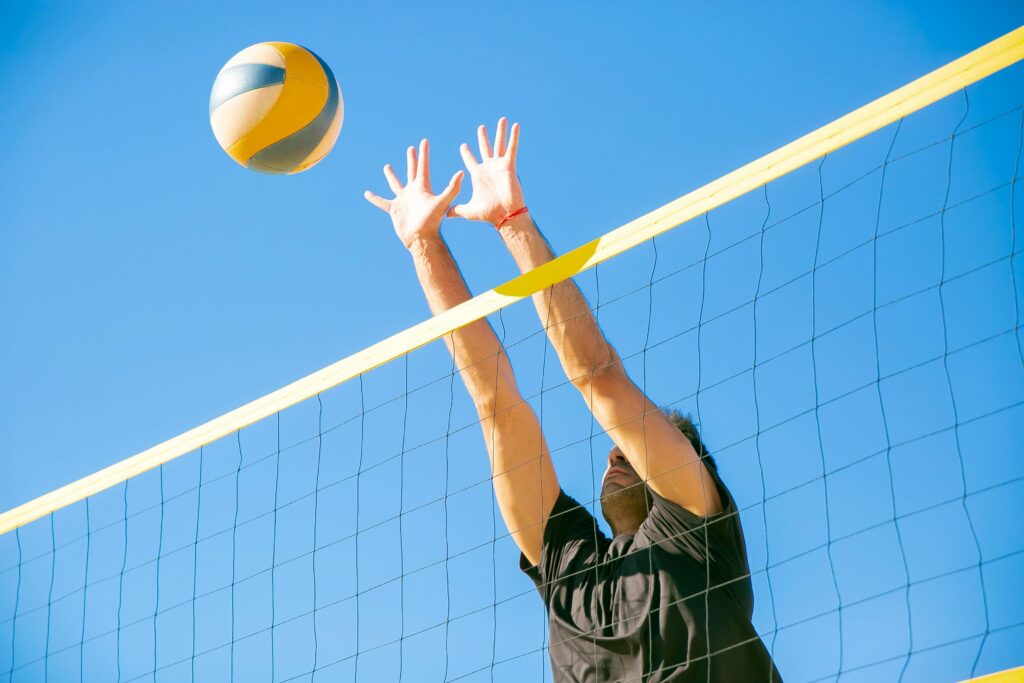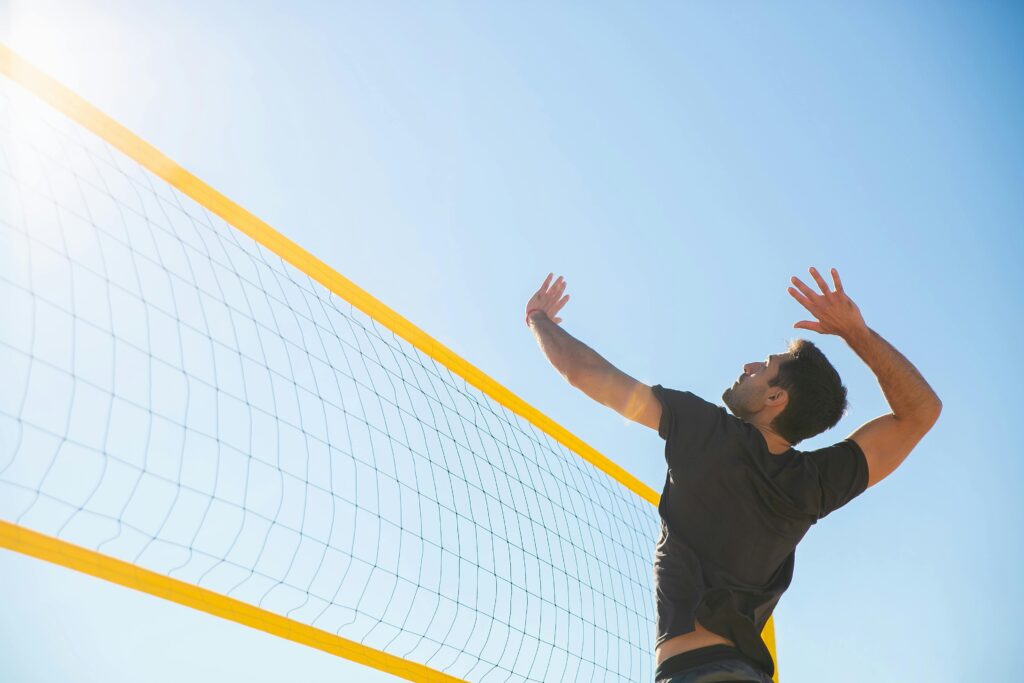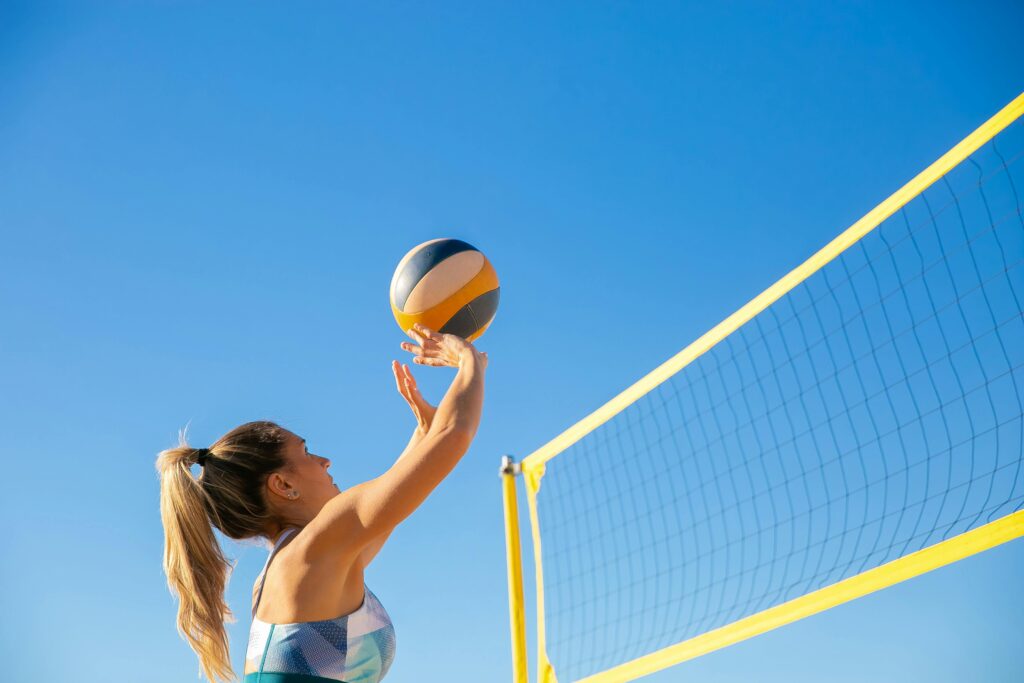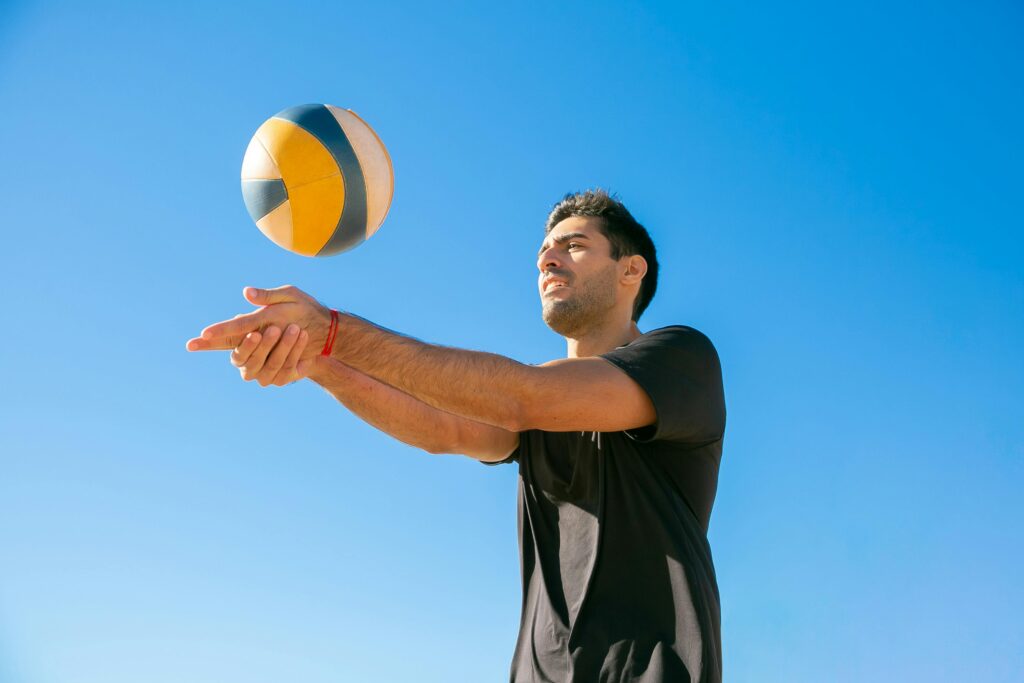master the court: your ultimate guide to volleyball positions
learn, play, dominate:
your volleyball journey starts here.
basics
new to volleyball?
No worries! Whether you’re looking to ignite a lifelong passion for volleyball or simply want to understand the game better, understanding the ins and outs of volleyball positions is your key to unlocking the intricacies of this exciting sport. From the powerful hitters crushing it at the net to the sneaky setters running the show, every player position in volleyball has a unique role to play in the awesome teamwork that makes this sport so much fun.
all positions
In this guide, we’ll break down the different court positions in volleyball so you know exactly who’s doing what out there. We’ll cover all the positions, from attackers who dominate the net to defenders who keep the ball in play.
positions names, numbers and roles
You’ll learn all the cool volleyball player position names, their number positions in volleyball, and what they’re responsible for. We’ll even dive into the nitty-gritty of volleyball positions and roles, giving you the lowdown on the skills and strategies that make each position a key part of a winning team.
ready to start?
This guide is perfect for beginners who are just starting to learn about volleyball! We’ll break down everything in a way that’s easy to understand, so you can hit the court with confidence. By the end of this guide, you’ll be able to identify the different positions, understand their roles, and start cheering on your favorite players with a deeper appreciation for the game!
outside hitter (or left side hitter): the complete scorer
role: primary attacker, passer, and defender
The outside hitter is the offensive workhorse, responsible for the bulk of a team’s attacks. They’re a triple threat, excelling in hitting, passing, and defense. Leading the charge while contributing in all aspects of the game.
key skills: hitting, blocking, passing, and court awareness
- Hitting Prowess: A vast arsenal of attacks, from powerful cross-court blasts to finesse shots that drop just inside the lines.
- Blocking Mastery: Timing their jumps to perfection, forming an impenetrable wall at the net to shut down opposing attacks.
- Passing Precision: Consistent platform and accurate passes to set up the offense and keep the rally alive.
- Court Vision: Anticipating the opponent’s moves and reacting swiftly to make plays on both offense and defense.

tips for outside hitters: develop a variety of shots, work on blocking timing, and improve passing consistency
- Expand Your Hitting Arsenal: Master a variety of shots – line, angle, cut, tip, roll – to keep the defense guessing.
- Become a Blocking Maestro: Practice your footwork, timing, and hand positioning to become a dominant force at the net.
- Pass with Perfection: Develop a rock-solid platform and focus on consistent, accurate passing to your setter.
- Cultivate Court Awareness: Study the game, learn to read opposing hitters and setters, and anticipate where the ball is going.
middle blocker (or middle hitter): the wall at the net
role: primary blocker, quick attacker, and decoy
The middle blocker is the first line of defense, a towering presence at the net whose primary mission is to stuff opposing attacks. But they’re not just a wall; they’re also a deceptive offensive threat, capable of launching lightning-fast attacks that catch the defense off guard.
key skills: blocking, quick attacking, jumping ability, and reading the opponent’s offense
- Blocking: Mastering the art of reading the hitter’s approach, timing their jump impeccably, and extending their arms to create an impenetrable barrier.
- Quick Attack: Exploding into the air with lightning speed, executing rapid attacks – slides and quicks – that leave the defense scrambling.
- Vertical Leap: Possessing exceptional jumping ability to reach the pinnacle of their blocking potential and deliver devastating attacks.
- Opponent Analysis: Analyzing the opposing setter’s tendencies and the hitter’s approach to anticipate where the attack is headed.

tips for middle blockers: work on blocking footwork, develop a variety of quick attacks, and improve your jumping explosiveness
- Footwork Finesse: Develop nimble footwork to move laterally along the net, closing gaps and positioning yourself for optimal blocking.
- Expand Your Attacking Arsenal: Master a variety of quick attacks – slides, quicks, shoots – to keep the defense on their toes.
- Skyrocket Your Vertical: Engage in plyometric exercises and strength training to boost your jumping explosiveness.
- Become a Student of the Game: Study opposing teams, analyze their attacking patterns, and learn to predict their moves.
opposite hitter (or right side hitter): the offensive weapon
role: primary attacker from the right side, blocker, and occasional passer
The opposite hitter is the offensive juggernaut, a force of nature whose primary mission is to unleash devastating attacks from the right side of the court. While also a formidable blocker, their offensive firepower is their defining characteristic. Think of them as the heavy artillery of volleyball, capable of delivering game-changing blows.
key skills: powerful hitting, blocking, and jumping ability
- Hitting: Possessing a diverse arsenal of attacks – thunderous cross-court smashes, cunning tool shots, and crafty tips – that overwhelm the defense.
- Blocking: Timing their jumps with precision and utilizing their height and reach to form an intimidating wall at the net, frustrating opposing hitters.
- Vertical Jump: Gifted with exceptional jumping ability, allowing them to soar above the net and unleash attacks from seemingly impossible angles.

tips for opposites: develop a range of hitting shots, work on blocking technique, and improve jumping power
- Expand Your Hitting Arsenal: Master a wide range of hitting shots – cross-court, line, sharp angles, off-speed shots – to keep the defense guessing and off balance.
- Become a Blocking Beast: Refine your blocking technique, focusing on footwork, hand positioning, and timing to become a dominant force at the net.
- Soar to New Heights: Incorporate plyometric exercises and strength training to maximize your jumping power and elevate your attacks to the next level.
setter: the maestro of the offense
role: orchestrates the offense, sets up teammates for attacks, and plays defense
The setter is the conductor of the volleyball orchestra, the mastermind who orchestrates every offensive movement. Their hands are their wands, their sets their notes, and their teammates their instruments.
key skills: setting accuracy, ball control, decision-making, and communication
- Setting: Possessing the ability to deliver precise, well-placed sets that consistently put their hitters in the best position to attack. This requires impeccable hand-eye coordination, a soft touch, and a deep understanding of each hitter’s preferences and strengths.
- Ball Control: Controlling the ball with finesse and accuracy, whether it’s a perfect dig to initiate the offense, a smooth bump to keep the rally alive, or a deft dump over the net to catch the defense off guard.
- Tactical Brilliance: Making split-second decisions under pressure, analyzing the defense, and selecting the optimal attack strategy to exploit their weaknesses.
- Communication: Establishing a strong connection with their hitters through verbal and non-verbal cues, ensuring everyone is on the same page and ready to execute the game plan.

tips for setters: work on passing platform, improve digging technique, and develop court awareness
- Perfect Your Setting Technique: Master the fundamentals – footwork, hand positioning, body posture – and practice relentlessly to develop a smooth, consistent setting motion.
- Sharpen Your Decision-Making: Train your mind to process information rapidly and make sound judgments under pressure. Study the game, analyze different scenarios, and learn to anticipate the opponent’s moves.
- Foster Strong Communication: Build trust and rapport with your hitters through open communication, both on and off the court. Learn their preferences, understand their strengths, and develop a shared language of non-verbal cues.
libero: the back row guardian angel
role: focuses on passing and defense, wears a different jersey, and can substitute for any back row player
The libero is the defensive maestro, the last line of defense, and the unsung hero of the volleyball court. They’re a whirlwind of energy, sacrificing their bodies to keep the ball alive and igniting their team’s counterattacks. Think of them as the ninja warrior of volleyball, darting across the court, diving for every ball, and frustrating opposing hitters with their seemingly impenetrable defense.
key skills: excellent passing, digging, and defensive anticipation
- Passing Precision: Possessing a flawless platform and the ability to turn even the most wicked serves into perfect passes, setting up the offense for success.
- Digging Expertise: Reacting with lightning reflexes to excavate even the most blistering attacks, turning seemingly impossible digs into opportunities for their team.
- Defensive Intuition: Anticipating the opponent’s attacks, reading their hitters’ tendencies, and positioning themselves perfectly to make the dig.

tips for liberos: work on passing platform, improve digging technique, and develop court awareness
- Master Your Platform: Develop a rock-solid passing platform – low to the ground, angled correctly, and with a strong base – to ensure consistent and accurate passes.
- Hone Your Digging Technique: Practice your footwork, your diving form, and your ability to react quickly and instinctively to balls hit with power and spin.
- Cultivate Court Awareness: Study the game, learn to read the opponent’s offensive patterns, and anticipate where the attacks are likely to be directed.
defensive specialist (DS): the back row reinforcement
role: provides additional defensive support in the back row, often substitutes for weaker passers or defenders
The defensive specialist (DS) strengthens the back row, specializing in defense. They excel at passing and digging, providing a safety net for the team. While their teammates focus on attacking, the DS stays grounded, anticipating the opponent’s moves and ready to make key defensive plays.
key skills: passing, digging, and defensive skills
- Passing Accuracy: Consistently delivers clean passes, setting up the offense for success.
- Digging Expertise: Reacts quickly and effectively to digs, keeping the ball in play.
- Defensive Awareness: Reads the opponent’s offense, anticipating attacks and positioning themselves for optimal defense.

tips for defensive specialists: improve passing and digging technique, and work on defensive positioning and anticipation
- Master Your Passing Platform: Practice drills to develop a stable platform that can handle various serves.
- Sharpen Your Digging Technique: Refine your diving form, reaction time, and ability to read the hitter.
- Develop Court Awareness: Analyze the opponent’s offense and anticipate where attacks are directed. Position yourself strategically to maximize defensive impact.
pinch server: the ace machine
role: enters the game solely to serve, typically known for powerful or tricky serves.
The Pinch Server is a weapon of precision, brought onto the court with a singular purpose: to disrupt the opponent’s rhythm and rack up points through masterful serves. They are the sharpshooter, the ace machine, the player who can transform a serve into a game-changer.
key skills: serving power, accuracy, variety (jump float serve, jump topspin serve, hybrid serve)
- Serving Power: Generates explosive power from their core and legs, launching the ball with incredible velocity and putting immense pressure on the opponent’s reception.
- Serving Accuracy: Places the ball strategically within the court, targeting weak spots in the opponent’s defense and exploiting their vulnerabilities.
- Serving Variety: Commands a diverse arsenal of serves – jump serves, float serves, topspin serves – to keep the opponent guessing and off-balance.

tips for serve specialists: develop a consistent toss, master different serve types, and work on serving placement to exploit weaknesses in the opponent’s reception.
- Toss Consistency: Develop a reliable and consistent toss, ensuring the ball is positioned optimally for each type of serve.
- Serve Mastery: Master the mechanics of different serve types, from the power of the jump serve to the deceptive movement of the float serve.
- Tactical Placement: Analyze the opponent’s formation and target their weaknesses, aiming for seams in their defense or exploiting specific players.